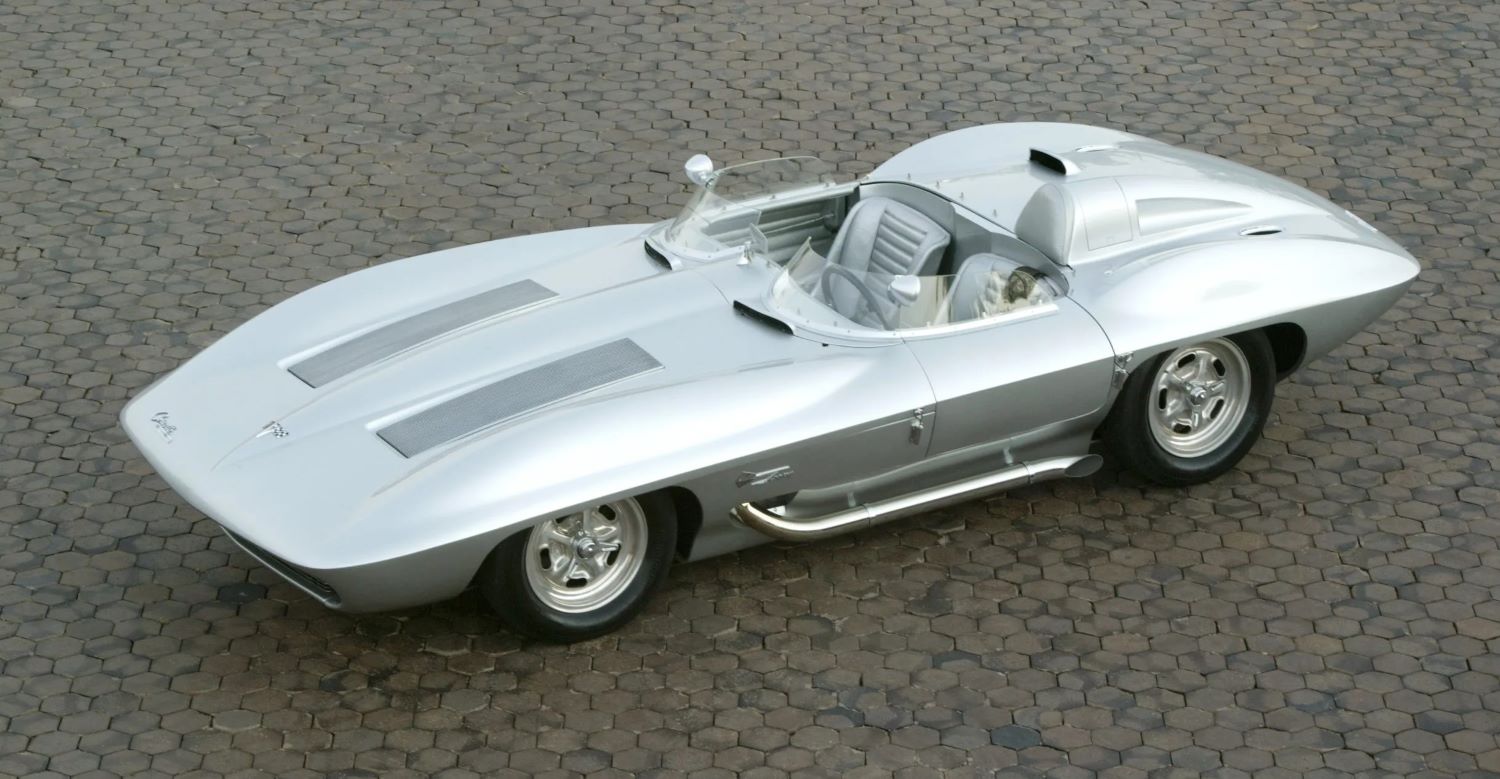
The Corvette Stingray was a privately funded concept car that formed a basis for the second generation Corvette Sting Ray. The Stingray racer-concept car was designed by Pete Brock the youngest designer to work at GM at that time, Bill Mitchell, GM Vice President of styling, and Larry Shinoda in 1957. The basis of the Stingray was the 1957 Corvette SS The Stingray exists today with a 327-cubic-inch (5.4 L), fuel-injected V-8 of 375 hp (280 kW).
The Stingray used elements of the still-born Q-Corvette design study as well as the SS underpinnings, featuring a 92-inch wheelbase. The new car was exceptionally light, with a dry weight of 2,200 pounds, nearly 1,000 lb lighter than a 1957 production car. Its fuel-injected small-block 283-cubic-inch (4.6 L) V-8 engine produced 315 horsepower at 6,200 rpm. The Stingray body design strongly influenced the styling of the next generation Corvette, which saw production as a 1963 model. It also was a test bed for many technical developments, including the four-speed manual transmission, extensive use of aluminum and a de Dion rear suspension.
Operational history
Billed as a car “built to test handling ease and performance,” Bill Mitchell arranged to race the car quite extensively. In the hands of Dr. Dick Thompson, it made its debut at Maryland’s Marlboro Raceway on 18 April 1959, finishing in fourth place. It went on to win an SCCA National Championship in 1960.
The Stingray was then retired from racing and modified by Mitchell with, among other things, a passenger seat added. The modified vehicle was exhibited as an experimental show car even while Mitchell regularly drove it personally on weekends. After its career as a concept car was finished, it was retained by the GM Design Studio as a historically significant vehicle.
Specifications
- 1957 Stingray Racer
- Frame:Space frame
- Body: Fiberglass
- Engine location: Front
- Drive type: Rear wheel
- Weight: 2,200 lb (1,000 kg)
- Engine;
- Engine configuration: V
- Cylinders: 8
- Aspiration/Induction: Normal
- Displacement: 283.00 in | 4638 cc
- Valvetrain: OHV
- Power: 315 hp (235 kW) @ 6200 rpm
- Torque: 295.00 ft·lbf (400 N·m) @ 4700 rpm
- Power to weight ratio: 7.0 lb/hp
- Power to volume ratio: 68.5 bhp/L
- Bore: 3.87 in | 98.3 mm
- Stroke: 3.00 in | 76.2 mm
- Compression Ratio: 11.0:1
- Designer; Pete Brock, Bill Mitchell, Larry Shinoda
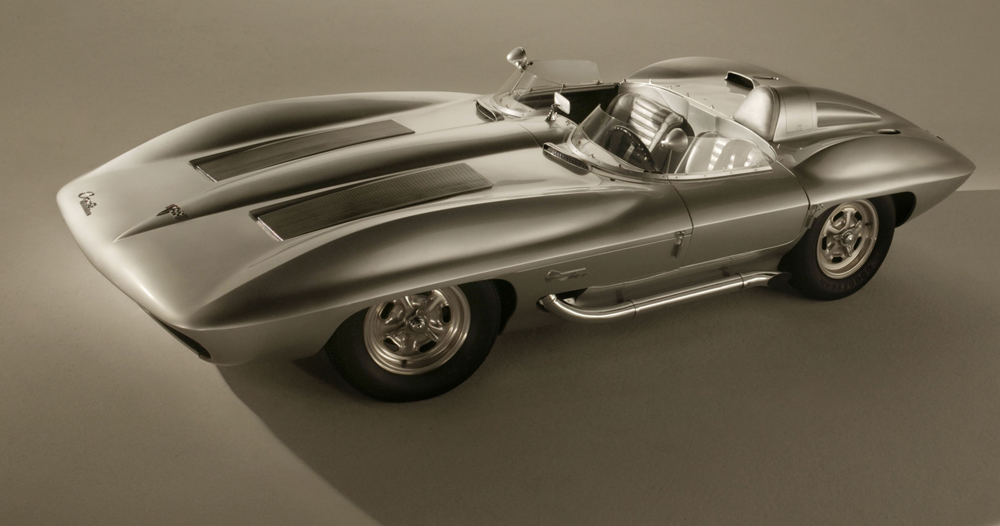
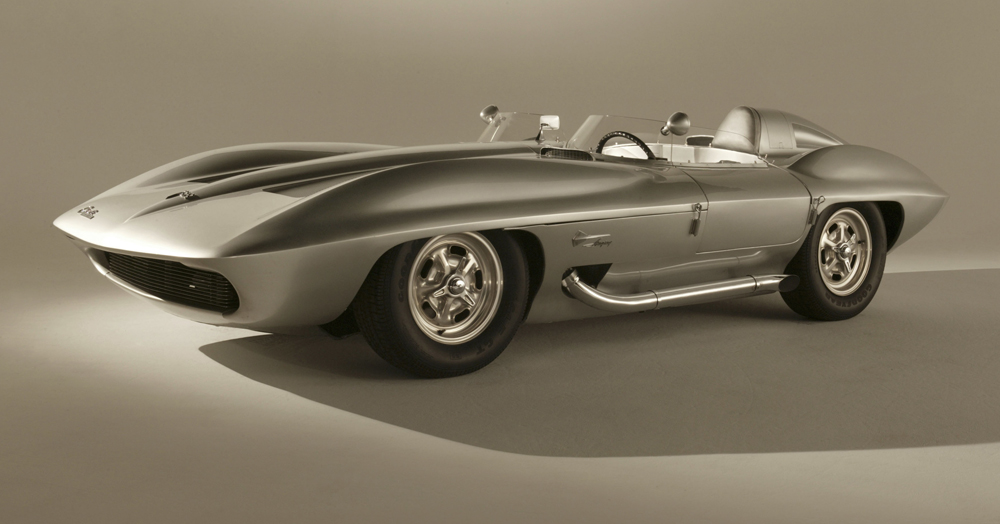
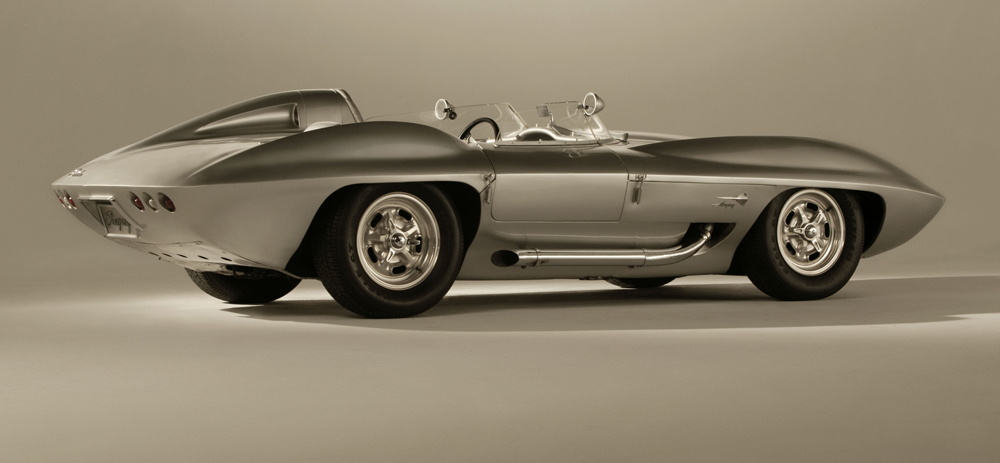
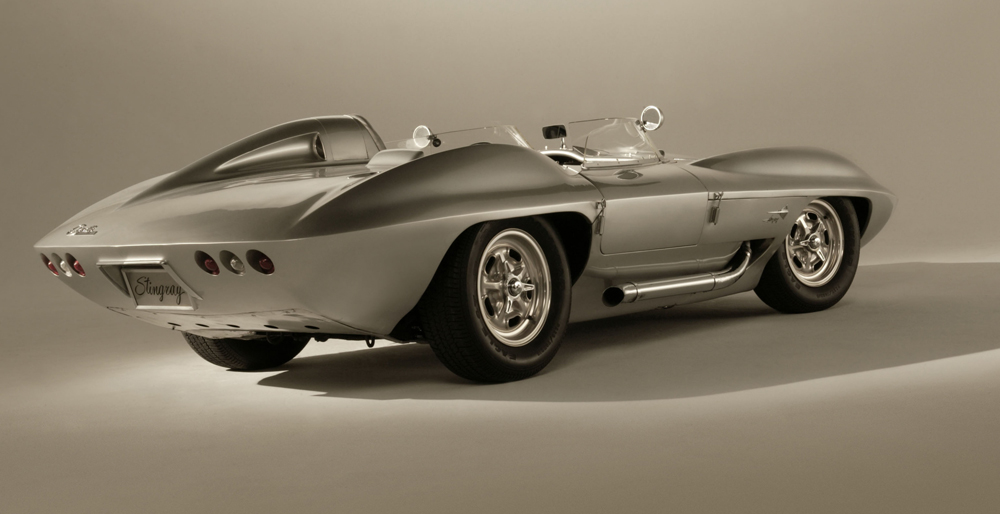

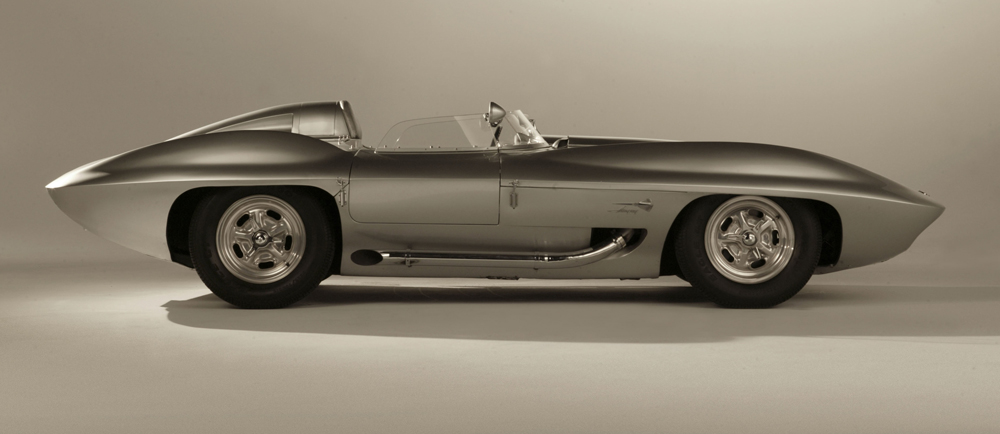

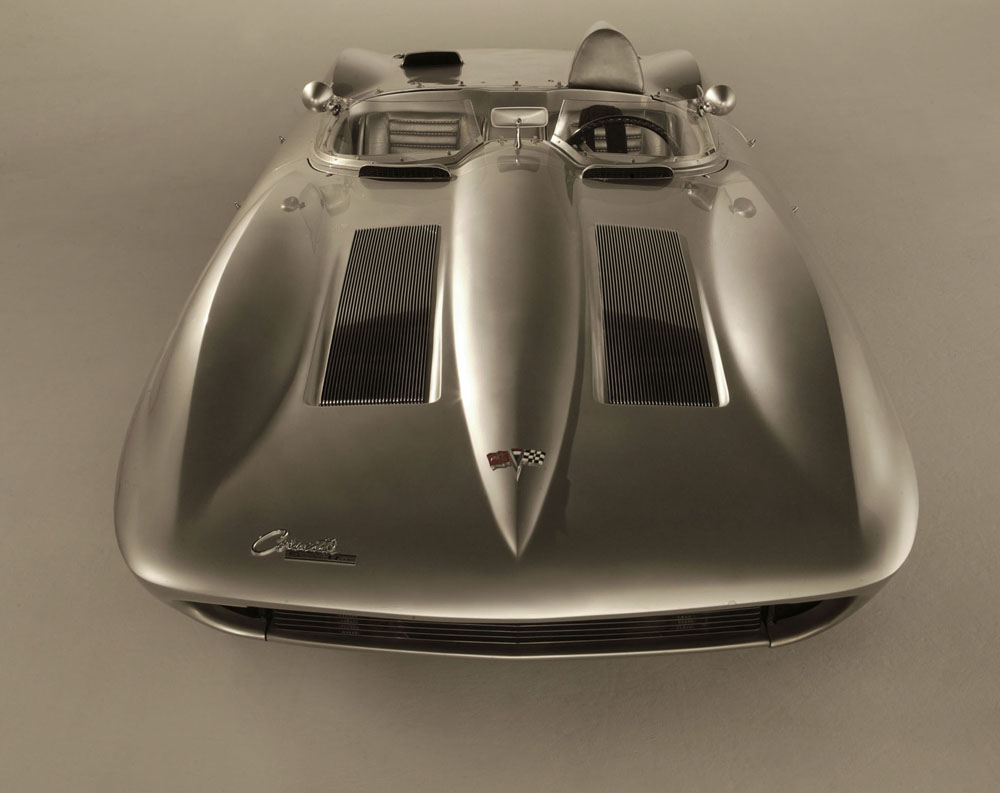
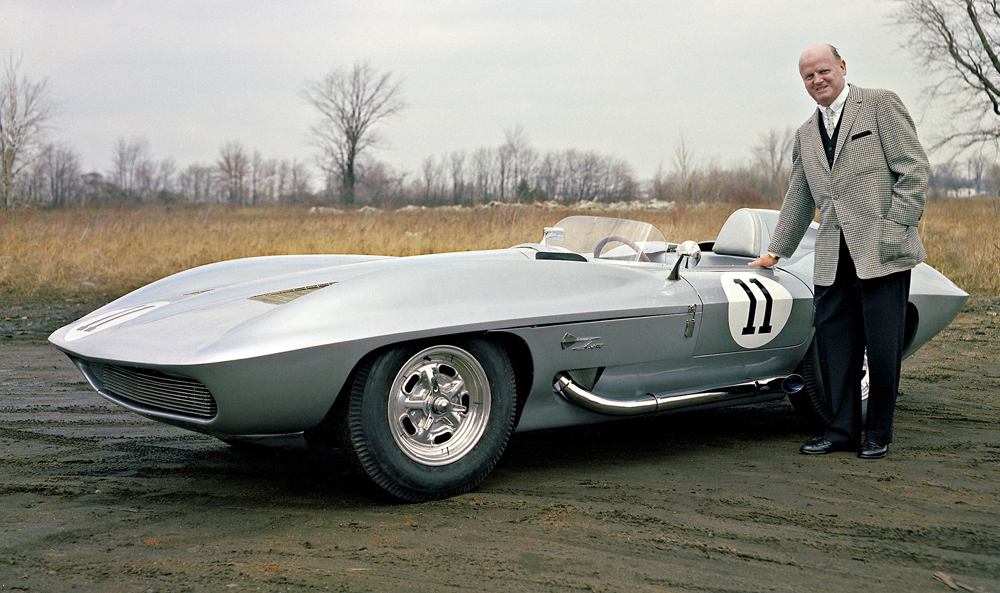

You must be logged in to post a comment.